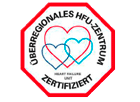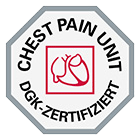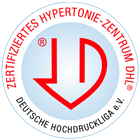Combined cardiac procedures
In patients presenting with a number of different conditions affecting the heart and/or blood vessels, it may be possible to combine surgical treatments in such a way as to perform them as part of one single procedure. One typical combination, for instance, is bypass surgery combined with heart valve surgery. In some cases, open surgery may also be able to be combined with certain catheter-based procedures.
What are combined cardiac surgery procedures?
Combined cardiac surgery procedures combine different surgical interventions, which are then performed as part of a single surgical procedure. It is, for instance, common for surgical procedures involving the coronary arteries and the heart valves to be performed at the same time.
Particularly in elderly patients, who frequently present with different heart and vascular disorders, combined surgical procedures can help to avoid the need for multiple surgical procedures and repeated stays in hospital.
In order to reduce the patient's overall risk, surgical interventions may at times be combined with catheter-based procedures. The combination of surgical and catheter-based techniques is known as a hybrid procedure.
When are combined procedures used?
Combined cardiovascular procedures may represent a suitable option in patients with two or more of the following conditions:
- Coronary heart disease requiring bypass surgery
- Heart valve disease
- Cardiac arrhythmias (Atrial fibrillation) that can be eliminated by destroying certain areas of the heart muscle responsible for producing abnormal electrical impulses (referred to as surgical ablation)
- Aortic aneurysm (Enlargement of the aorta)
- Carotid stenosis (Narrowing of the carotid artery)
- Peripheral arterial disease (Narrowing of the blood vessels in the legs and pelvis)
- Operable types of lung cancer
How can combined surgery procedures help?
Combined surgery procedures treat several conditions simultaneously. Over the past few years, combined procedures have become increasingly important in the field of cardiovascular surgery.
One of the reasons for this development is the fact that many cardiovascular disorders have the same underlying causes, with atherosclerosis a particular case in point. Over time, these underlying causes can lead to damage in different areas of the cardiovascular system. This is why elderly people frequently present with a variety of symptoms - such as when atherosclerosis affects the coronary arteries as well as the heart valves. It may sometimes be possible to combine surgical treatments, and therefore avoid the need for multiple surgical procedures.
Two procedures combined on a regular basis are bypass surgery and heart valve surgery. Cardiac surgery can also be combined with vascular surgery, which may become necessary as a result of carotid stenosis, an aortic aneurysm or atherosclerosis affecting the blood vessels in the pelvis and the legs. Combining different procedures that are to be carried out simultaneously is also possible in patients who present with a combination of heart disease and vascular disease affecting the abdominal aorta, the arteries in the pelvis, and the arteries of the legs.
What happens during combined surgery procedures?
Depending on the exact type of conditions being treated, there is a whole range of cardiovascular surgery techniques to choose from.
One of the more common hybrid procedures, which combines multiple bypass grafting procedures with heart valve surgery, typically consists of the following steps:
- Once the patient has been placed under general anesthesia, the first step is to cut through the breastbone and open the chest.
- The surgeon then dissects away the distal end of the left interior thoracic artery from the chest wall. This is used to establish a bypass route to the heart. At the same time, a second surgeon harvests a vein from the leg. Depending on the number of bypass grafts required, this may be cut into several sections.
- The patient is then connected to a cardiopulmonary bypass (heart-lung) machine: after taking in blood from the superior and inferior vena cava, the blood is saturated with oxygen inside the machine and pumped back into the aorta. The machine effectively takes over the function of the heart.
- The heart itself can now be stopped using a special infusion - the surgeon now works on a stopped heart.
- The bypass routes are created using the thoracic artery and the previously harvested sections of the patient's own vein; the defective heart valves are either replaced with prostheses, or they are reconstructed using specialist surgical techniques.
- In some cases, the surgeon may also have to treat an aortic aneurysm by implanting a vascular prosthesis.
- When blood is finally allowed to flow through the heart, the heart is warmed up; in many cases, the heart will start to beat spontaneously, or it may be re-started using mild electric shocks.
- Heart function and vascular function are carefully checked before the surgical team finally disconnect the heart-lung machine.
- The breastbone is repaired using wire, and the chest is closed.





